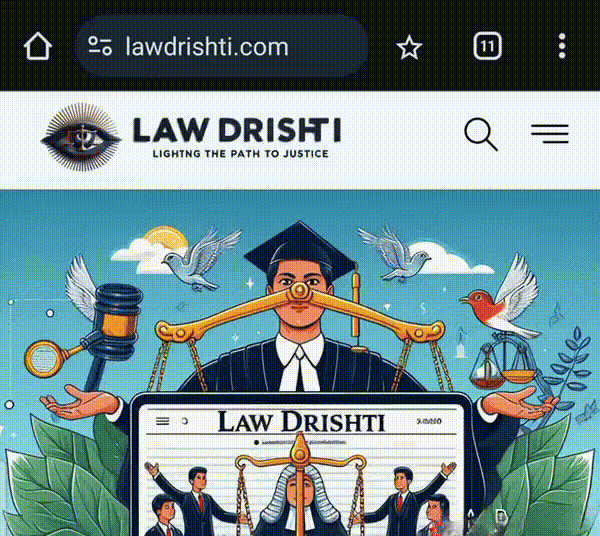Prohibited Degrees and Sapinda Relationship in Hindu Marriage Law
In our last post on Valid and Void Marriage in Indian Law, we explained how marriages are classified as valid, void, or voidable, and how these categories affect the rights of spouses and children. You can read it here: [Valid and Void Marriage in Indian Law]. Today, we will focus on an important condition in Hindu marriage law — the rules about prohibited degrees of relationship and the concept of sapinda relationship.
Why relationship rules exist
In Hindu law, certain close relationships are prohibited for marriage. These restrictions are meant to protect social order, avoid health risks from inbreeding, and maintain traditional family structures. The idea is that very close relatives should not marry each other unless there is a well-recognised custom in their community that allows it.
If these rules are broken, the marriage is void under the Hindu Marriage Act. This means the law treats it as if it never existed. However, the law also makes some exceptions if there is a proven custom that permits such a marriage.
Meaning of prohibited degrees of relationship
The Hindu Marriage Act defines prohibited degrees of relationship. Two people are within prohibited degrees if:
- One is the lineal ascendant of the other.
Example: A father and daughter, grandfather and granddaughter. - One is the wife or husband of a lineal ascendant or descendant of the other.
Example: A man cannot marry his father’s wife (stepmother), or his son’s wife (daughter-in-law). - They are brother and sister, uncle and niece, aunt and nephew, or first cousins from the father’s or mother’s side.
- They have certain close relationships by adoption, which are treated the same as blood relations.
The law applies these rules to both full blood and half blood relations, meaning even if they share only one parent, the restriction remains.
Exceptions through custom
The Act allows marriage within prohibited degrees if there is a valid custom or usage governing each of the parties that permits such a marriage. A custom is valid if it has been continuously followed for a long time, is certain and reasonable, and does not oppose public policy.
For example, in some South Indian communities, marriage between a man and his maternal uncle’s daughter is allowed and considered traditional. In such cases, the prohibition does not apply if both parties belong to that community and follow that custom.
Sapinda relationship
The Hindu Marriage Act also prohibits marriages between sapindas of each other. Sapinda relationship is another way to measure closeness between two people, but it is based on generations.
Two people are sapindas of each other if:
- One is a lineal ascendant of the other within the limits of sapinda relationship, or
- They have a common lineal ascendant within the limits.
For the man, the sapinda limit is five generations on the father’s side, counting the man himself as the first generation. For the woman, the limit is three generations on the mother’s side, counting the woman herself as the first generation.
This means if two people share a common ancestor within these limits, they are sapindas and cannot marry unless custom allows it.
How prohibited degrees and sapinda rules work together
Sometimes, two people can be within both prohibited degrees and sapinda relationship. In such cases, the marriage is clearly void unless there is a custom permitting it. Even if they are not within prohibited degrees, being sapindas can still make the marriage void.
Example: A man wants to marry his second cousin. Depending on how the generations are counted, they may be sapindas even if they are not within prohibited degrees like uncle-niece.
Legal effects of violating these rules
If a Hindu marriage takes place in violation of prohibited degrees or sapinda rules without a valid custom allowing it:
- The marriage is void.
- The spouses have no legal rights against each other as husband and wife.
- Children from such marriages are legitimate for inheritance from parents, but not from other relatives.
Courts have repeatedly upheld that these rules are mandatory unless a proven custom applies.
Proving custom
When parties claim a custom allowing a marriage otherwise prohibited, the burden is on them to prove it. Evidence can include:
- Testimony of community elders.
- Records of past marriages of the same type in the community.
- Community recognition of such marriages as valid.
Courts will reject claims of custom if they appear to be newly invented or are unreasonable.
Why understanding these rules matters
Many disputes in family law arise because one or both spouses were unaware of these restrictions. Awareness helps couples avoid void marriages and the resulting legal complications.
It also ensures that marriages are socially accepted within the community, reducing chances of family disputes or social stigma.
Everyday examples
- Ramesh marries his maternal uncle’s daughter in a community where this is a traditional practice. The marriage is valid because the custom is recognised.
- Sunita marries her father’s sister’s son without any such custom. The marriage is void under Hindu law.
- Two people share a common great-great-grandparent. They fall within the sapinda limit and cannot marry unless custom allows.
Summary
Hindu marriage law carefully regulates who can marry whom, focusing on prohibited degrees of relationship and sapinda relationship. These rules protect social order and health, while allowing exceptions where strong, established customs exist. Breaking these rules without a valid custom makes the marriage void, stripping spouses of legal rights but still protecting children’s inheritance from parents.





